Bartlett Graduate Completes Landmark Hat-Trick of Honours at the RIBA President’s Medals
7 December 2022
Architecture MArch graduate Annabelle Tan is the first prizewinner in history to collect the Silver, Bronze and Dissertation Medals at the prestigious awards, completing a stellar prizewinning run.
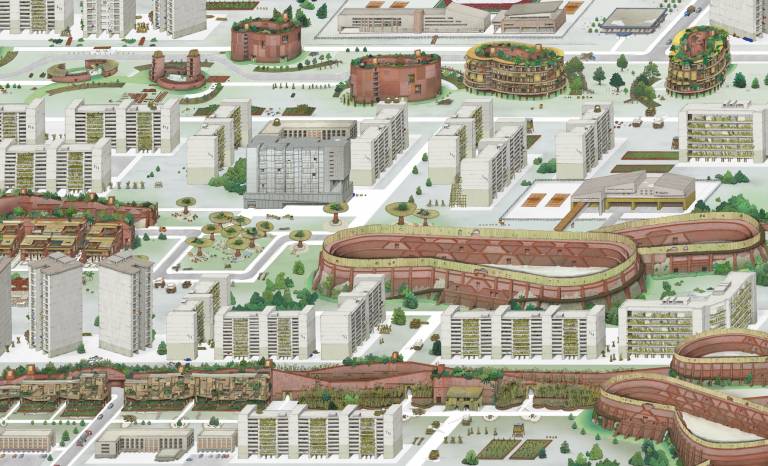
The RIBA President’s Medals were established in 1836 and are regarded as the most prestigious awards in architectural education. A record 500+ schools from 100 countries were invited to nominate entries for this year’s awards, which reward technical and creative excellence in multiple categories at the Part 1 and Part 2 levels.
In a ceremony last night at RIBA’s London headquarters, RIBA President Simon Allford presented Bartlett graduate Annabelle Tan with the Silver Medal for the best project of the year at Part 2, and the Dissertation Medal, as well as the RIBA Award for Sustainable Design at Part 2, for her graduating Architecture MArch (ARB/RIBA Part 2) project ‘Past, Present and Post-Tropicality: Viewing Singapore through an ‘Infra(-)structural’ Field’.
Her Silver Medal-winning project is a multi-dimensional and layered investigation into notions of ‘tropicality’ in the context of Singapore, encompassing sustainably generated housing, educational spaces, and areas for civic engagement, and connecting a threatened forest to a national nature reserve. The project also collected the Sir Banister Fletcher Prize and Medal, the Ambrose Poynter Prize and the Bartlett School of Architecture Medal, MArch at this year’s Bartlett Summer Show.
Annabelle's thesis, which won the Dissertation Medal, focuses on Singapore’s past, present and future urban landscape to unpack how notions of ‘tropicality’ have been used epistemologically in colonial, post-colonial and neoliberal infrastructures to describe the tropics as separate to the normative West. She examines a different, lived reality through ethnographic observation and the lens of her own intergenerational family memories; and proposes a graduation past ‘tropicality’ toward a post-tropical condition.
Annabelle had already previously won the Bronze Medal in 2019 for her Architecture BSc (ARB/RIBA Part 1) project, ‘Wetland Frontier’. She becomes the only student in the awards’ 186 year history to collect every Medal, and the first to receive both the Silver and Dissertation Medals in the same year. Last night’s honours crown a remarkable academic journey for Annabelle, who also won first prize in RIBA Journal’s Eye Line Drawing Competition in 2021, the Donaldson Medal in 2019 and the SOM Foundation Fellowship in 2019.
Annabelle’s success this year, and her other awards in recent years, make her the highest-awarded student in the history of RIBA. The Bronze, Silver and Dissertation Medals are all judged blindly by separate and independent panels.
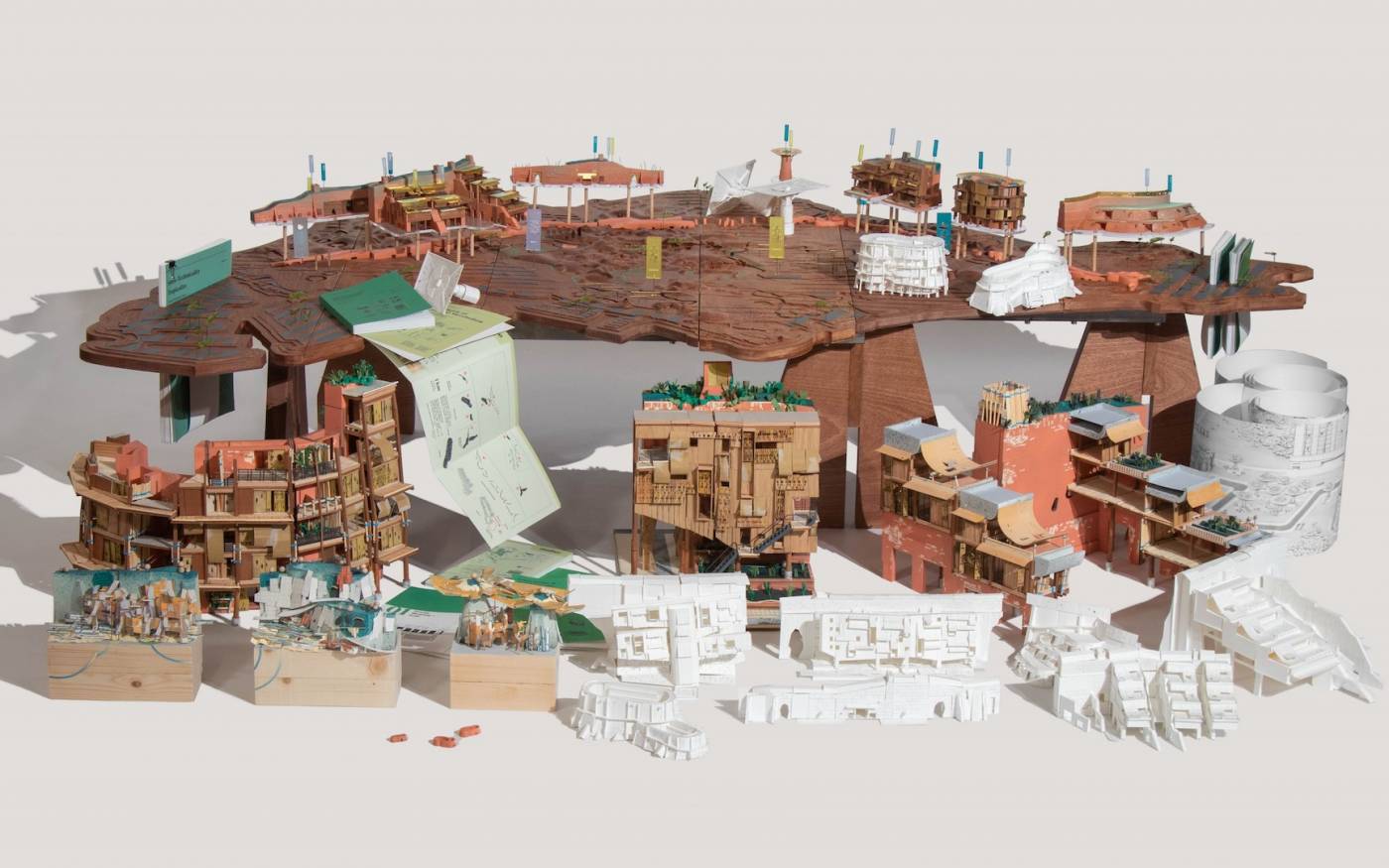
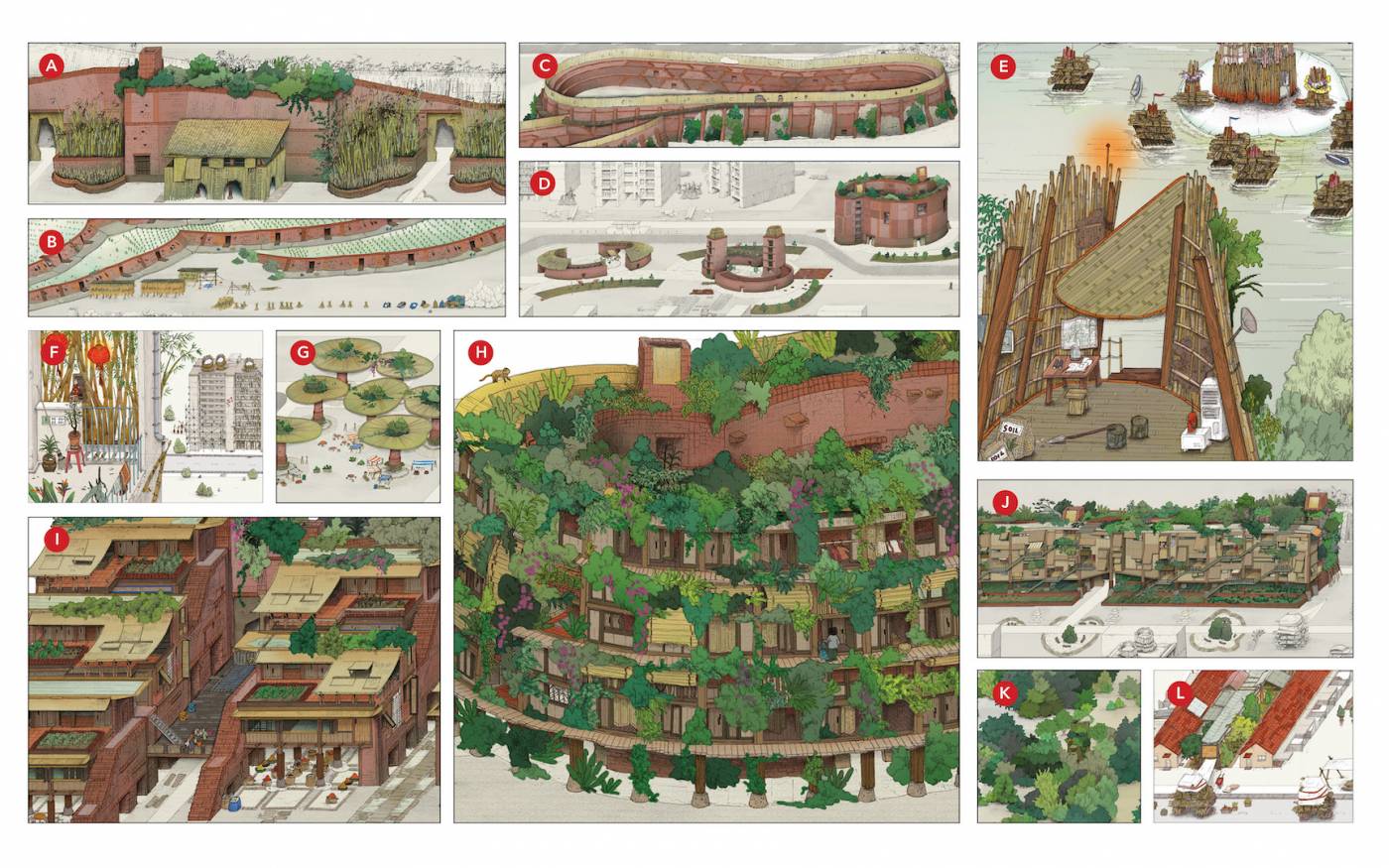
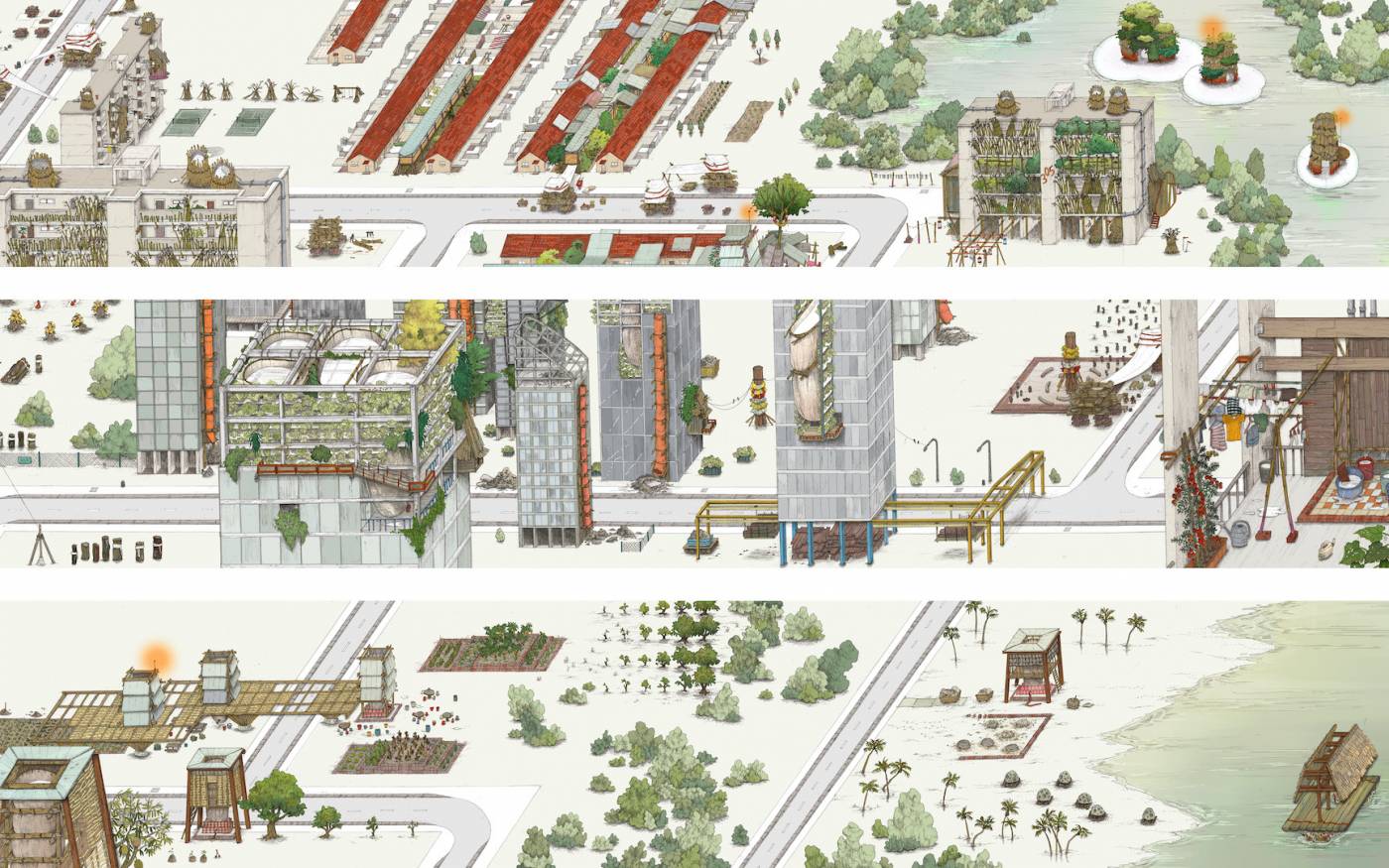
‘Past, Present and Post-Tropicality: Viewing Singapore through an ‘Infra(-)structural’ Field’
Annabelle Tan
Architecture MArch (ARB/RIBA Part 2), PG11
RIBA Silver Medal
RIBA Award for Sustainable Design at Part 2
The project is an investigation into notions of ‘tropicality’ in the context of Singapore. Historically, concepts of nature, comfort, civil behaviour and progress have been shaped by depoliticised agendas grouped under the umbrella of ‘tropicality’. Framing ‘tropicality’ in terms of scarcity and affordances, the project ‘unmakes’ colonial vestiges of ‘tropical success’ that linger in our infrastructure and ‘remakes’ a landscape of affordances.
Spanning 4.2km, the project is a socio-ecological continuum linking a threatened forest to a recognised nature reserve. Social and physical constructs of scarcity are dissected, imagining new ways that lean towards productive and performative dwelling practices that synthesise nature and culture.
Large data on resource management inform the masterplan while local ways of construction and material performance shape details of aesthetics and structural logic. The technicality is balanced with an ethnographic approach to challenge normative domesticity through new housing schemes. At this scale, the affective and intimate experiences of infrastructure and resource prioritise tropical bodies in the investigation into post-tropicality.
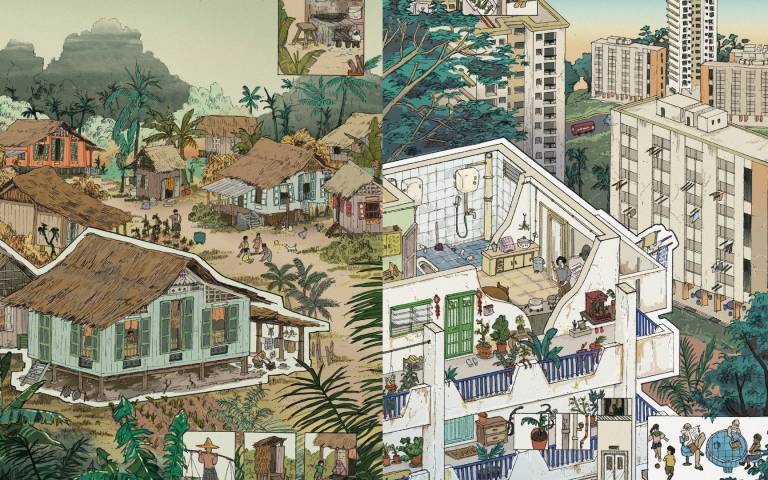 ‘Past, Present and Post-Tropicality: Viewing Singapore through an ‘Infra(-)structural’ Field’
‘Past, Present and Post-Tropicality: Viewing Singapore through an ‘Infra(-)structural’ Field’

Annabelle Tan
Architecture MArch (ARB/RIBA Part 2), PG11
RIBA Dissertation Medal
‘Tropicality’ was an epistemological tool historically used by colonial powers to naturalise and espouse Western modern rationality, marking the tropics as a socio-environmental ‘other’ to the perceived normality of temperate climates. Today, lingering post-colonial and neo-colonial tropes of ‘tropicalities’ continue to shape the built environment.
This thesis dissects three chronological modes and authoritative constructions of dominant 'tropicality' in Singapore through the lens of modern infrastructure: colonial (British control), post-colonial (nation-building) and contemporary (neoliberal). Crucially, I investigate ‘infrastructures’ of such dominant ‘tropicality’ alongside ordinary people’s lived tropical worlds and their socio-natural relationships, which created an alternative ‘infra-structure’ of tropicality - the radical potential of which is often unnoticed. I explore these diametric strands in parallel through hegemonic infrastructure and everyday acts that resist, appropriate or hybridise these power-laden spaces.
The research methodology speaks to the different epistemologies (abstract knowledge) and metis (local, accumulated practice) employed in dominant and alternative worlds respectively. It thus gathers institutionalised knowledge but also meanings and intelligence behind everyday practice. Maps, charts and government reports are used to study the former, while ethnographic observation, intergenerational memory of my grandmother, mother and myself and affective experiences illustrate the latter. I captured the past/present ‘lived worlds’ through oral narratives, collaborative mappings and drawings, prompted by family photos.
In doing so, I argue that a catalogue of alternative, subaltern practices, embodied knowledge and material cultures emerges, unsettling reductive, neocolonial ‘tropicality’ towards a post-tropical condition.
“Annabelle Tan's accomplishment is nothing short of extraordinary - in the 186 years since the medal was first awarded, she is the only student to have won the Dissertation Medal and the Bronze and Silver Medals. Congratulations to Annabelle and thanks to the numerous Bartlett design tutors and dissertation advisers who contributed to her historic success."
- Prof Amy Kulper, Director of The Bartlett School of Architecture
Annabelle was tutored in unit PG11 on Architecture MArch (ARB/RIBA Part 2) by Prof Laura Allen and Prof Mark Smout, and her thesis was supervised by Dr Tania Sengupta.
More information
Read about this year’s RIBA President’s Medals awards
Read about Annabelle winning the 2019 RIBA Bronze Medal
Read about Annabelle winning first prize in the 2021 RIBA Journal Eye Line Drawing Competition
Explore Annabelle’s prizewinning 2022 MArch project at The Bartlett Summer Show Archive
Find out more about Architecture MArch (ARB/RIBA Part 2) at The Bartlett
Images: ‘Past, Present and Post-Tropicality: Viewing Singapore through an ‘Infra(-)structural’ Field’, by Annabelle Tan, Architecture MArch (ARB/RBA Part 2), PG11
Thesis images:
Left: Kampung is used to describe the informal settlements of both indigenous Malay and migrant Chinese populations in Singapore.
Right: The Housing Development Board (HDB) estates are the state’s modern infrastructural ideal to provide universal services to its people, at the same time elevating them (physically and metaphorically) from the environment and means of self-sufficiency, creating the modern subject who is divorced from the products of their labour.
 Close
Close

